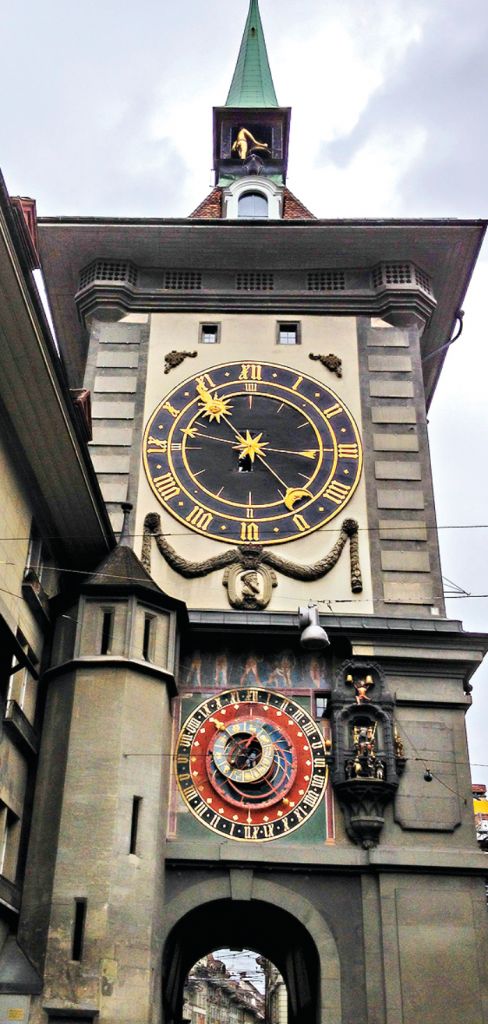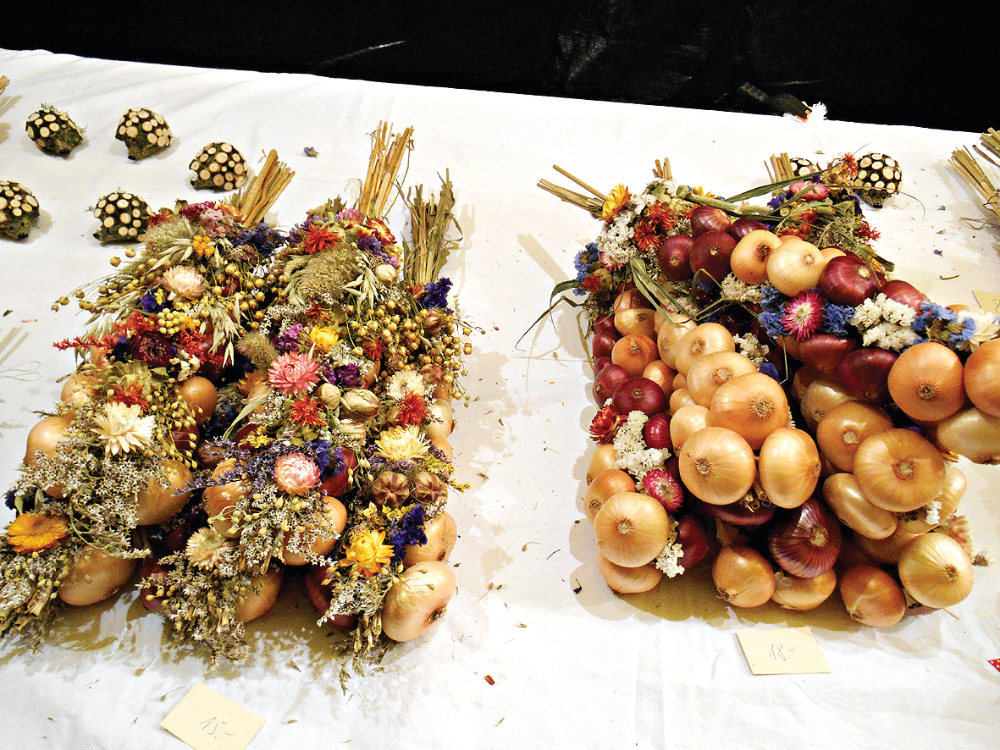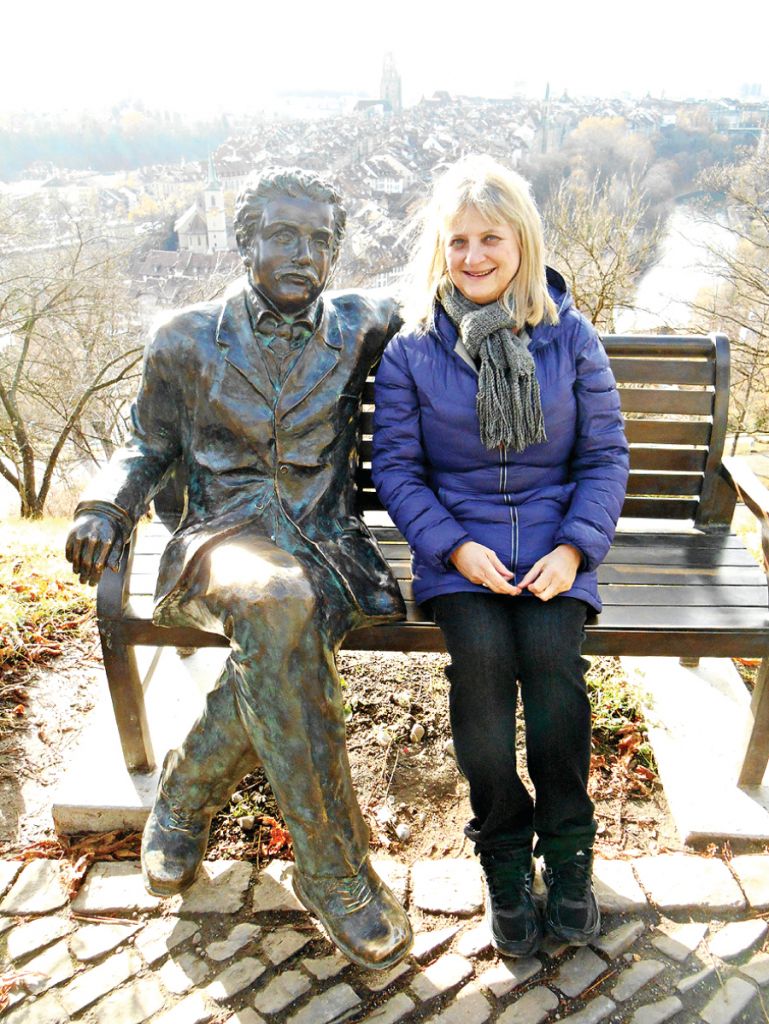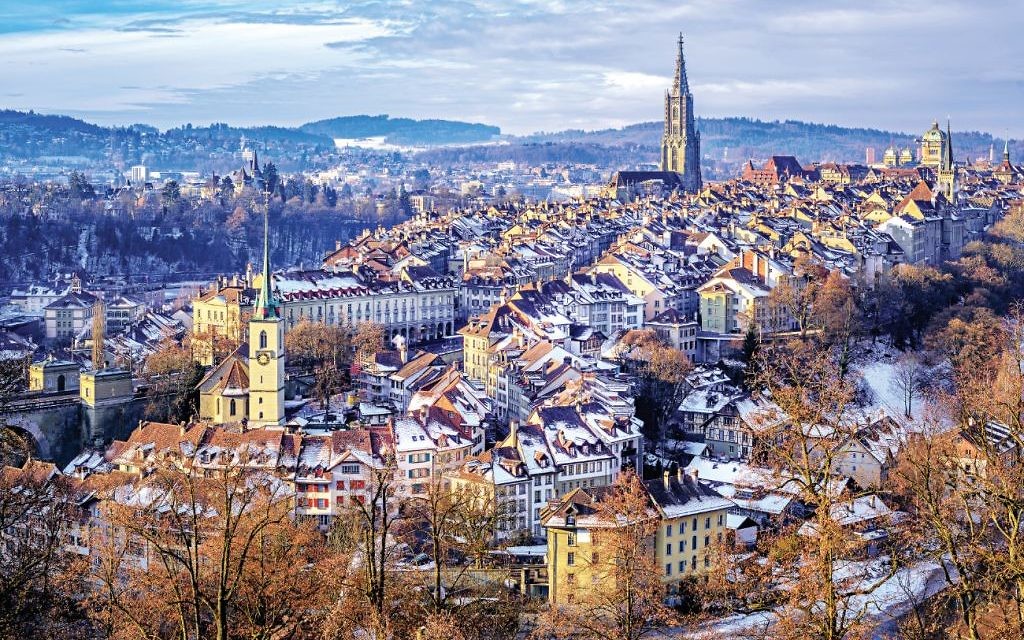Swiss you were here!
Lucy Daltroff discovers how a medieval clock tower in Bern inspired Einstein’s theory of relativity, and views an exhibition of art looted by the Nazis
With its sleepy clock towers and quiet cobbled streets, you could be forgiven for thinking Bern is just a small town rather than the capital of Switzerland.
But there’s something undeniably charming about this cosy city. Perhaps it’s because of Bern’s tiny population of around just 142,000 – about the same size as St Albans – or that there are only seven full-time members in the Swiss cabinet.
Whatever the reasons, this 12th-century settlement on the bend of the Aare River is a lovely place for a break. It’s just over an hour’s flight from London, but strangely seems to be a well-kept secret despite the whole attractive town centre being a Unesco World Heritage site.
Get The Jewish News Daily Edition by email and never miss our top stories Free Sign Up
The main square is dominated by an intricate medieval clock tower with moving puppets. It’s fabulously ornate and beautiful to look at, but most visitors might believe its main purpose is simply to tell the time.
They would be wrong – for this one clock actually inspired a young Albert Einstein, who lived here from 1903 to 1905, and his theory of relativity.
It was while Einstein was travelling on his daily tram ride up the main street, the Kramgasse, that the ground-breaking German-Jewish physicist imagined he was travelling towards the clock tower at the speed of light and came up with his famous equation.

The dedicated Einstein Museum explores his work and life further, while visitors can also view the apartment where the young scientist lived with his wife and son.
His former home is beautifully positioned in the centre of the town, but I was surprised to see the Einsteins had to share the kitchen and bathroom with other tenants. A lack of finances is also evidenced by a local newspaper advert, in which Einstein offered private lessons in maths and physics – including the first one for free!
My visit over the winter months coincided with Bern’s famous ancient annual onion market and carnival, regarded as a must for every Swiss citizen to attend at least once in his or her lifetime.
As I wandered along the dark streets at 5am there was a palpable excitement mingled with the wafting smells of onions, garlic and, of course, glühwein.
Proceedings culminate with the procession of the Onion Head, whereby a citizen who has helped charitable causes during the year is honoured by being led through the streets accompanied by a brass band while children, and occasionally adults, throw confetti on all and sundry.
Afterwards, while walking back across the river with the sun glistening on top of the Prealps in the distance, it was easy to understand why Bern has been voted as one of the best cities in the world to live in.
There is also controversy, however. Bern’s Museum of Fine Arts is currently showing a selection of artworks from the collection of Cornelius Gurlitt.

In 2013, 81-year-old Gurlitt was visited by tax inspectors, only for them to discover a huge hoard of artworks – 1,406 in total – in what was later described as “the biggest artistic find of the post-war era”.
The art-loving recluse had inherited the collection from his father, Hildebrand Gurlitt, a well-known collector and one of four dealers asked to act on behalf of the Nazis, with the task of acquiring work for the unrealised Führermuseum project in Linz.
Many of the works were simply stolen, or belonged to owners who were forced to sell them far below their market value.

As a consequence of the find, Germany set up an international task force on returning looted art.
Although Bern’s Museum of Fine Arts is focusing on the works of “degenerate art” confiscated by the Nazis from German museums, I still found it difficult to go round the exhibition without thinking of the circumstances, rather than appreciating the art itself.
There was once a flourishing Jewish community in Bern during the Middle Ages, but they were driven out by 1427 and returned only in the 1840s, mostly from Alsace in France.
Today there are around 300 Jewish families (out of the 20,000 in Switzerland as a whole) and the centre of the community is the lovely synagogue at Kapellenstrasse 2.
It was inaugurated in 1906 and built in the Moorish style. I was taken round by Robert Heymann, former president and a fluent English speaker, who explained the synagogue had been extended in 1971 to include a community building and there was also a Jewish cemetery.
It’s an attractive building in all aspects – much like the beautiful city of Bern itself.
Lucy’s travel tips:
Lucy flew with Swiss International Air Lines (swiss.com), which offers fares from £74 one-way. Visitors can receive deals on travel passes and tickets at swisstravelsystem.co.uk. For more about the Einstein house, visit einstein-bern.ch or myswitzerland.com. The exhibition at the Museum of Fine Arts, kunstmuseumbern.ch, continues until Sunday.

Thank you for helping to make Jewish News the leading source of news and opinion for the UK Jewish community. Today we're asking for your invaluable help to continue putting our community first in everything we do.
For as little as £5 a month you can help sustain the vital work we do in celebrating and standing up for Jewish life in Britain.
Jewish News holds our community together and keeps us connected. Like a synagogue, it’s where people turn to feel part of something bigger. It also proudly shows the rest of Britain the vibrancy and rich culture of modern Jewish life.
You can make a quick and easy one-off or monthly contribution of £5, £10, £20 or any other sum you’re comfortable with.
100% of your donation will help us continue celebrating our community, in all its dynamic diversity...
Engaging
Being a community platform means so much more than producing a newspaper and website. One of our proudest roles is media partnering with our invaluable charities to amplify the outstanding work they do to help us all.
Celebrating
There’s no shortage of oys in the world but Jewish News takes every opportunity to celebrate the joys too, through projects like Night of Heroes, 40 Under 40 and other compelling countdowns that make the community kvell with pride.
Pioneering
In the first collaboration between media outlets from different faiths, Jewish News worked with British Muslim TV and Church Times to produce a list of young activists leading the way on interfaith understanding.
Campaigning
Royal Mail issued a stamp honouring Holocaust hero Sir Nicholas Winton after a Jewish News campaign attracted more than 100,000 backers. Jewish Newsalso produces special editions of the paper highlighting pressing issues including mental health and Holocaust remembrance.
Easy access
In an age when news is readily accessible, Jewish News provides high-quality content free online and offline, removing any financial barriers to connecting people.
Voice of our community to wider society
The Jewish News team regularly appears on TV, radio and on the pages of the national press to comment on stories about the Jewish community. Easy access to the paper on the streets of London also means Jewish News provides an invaluable window into the community for the country at large.
We hope you agree all this is worth preserving.
-
By Laurent Vaughan - Senior Associate (Bishop & Sewell Solicitors)
-
By Laurent Vaughan - Senior Associate (Bishop & Sewell Solicitors)
-
By Laurent Vaughan - Senior Associate (Bishop & Sewell Solicitors)
-
By Laurent Vaughan - Senior Associate (Bishop & Sewell Solicitors)






















